The Olympic curling stones crafted in Scotland
- Published
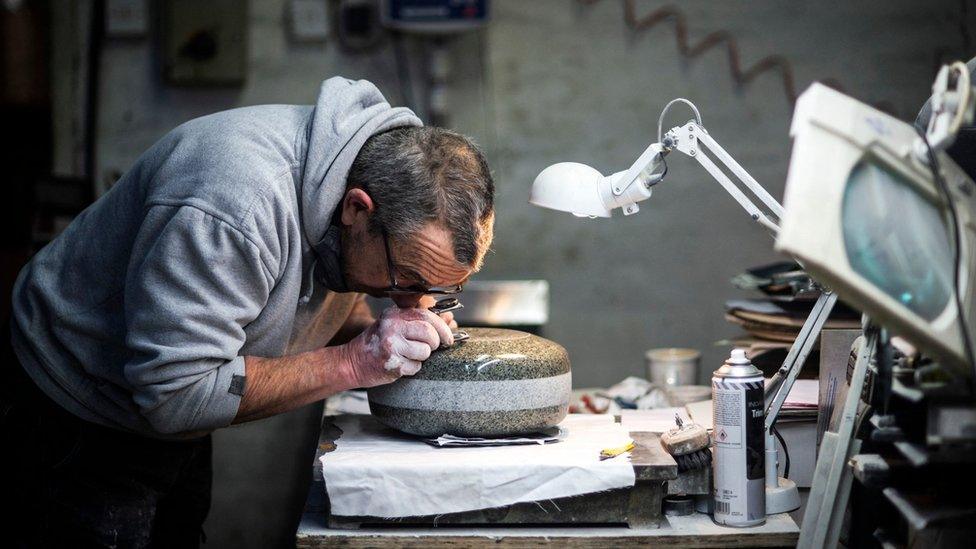
Production supervisor John Brown hand-finishes a stone in the workshop
Curling is back in the spotlight at the 2022 Beijing Winter Olympics - and all the stones used by the competitors originate from an uninhabited Scottish island.
They are hand-crafted at Kays Curling's workshop in Mauchline, Ayrshire, using granite from the island of Ailsa Craig.
The company's stones are the only ones used in competition by the World Curling Federation.
Kays Curling was founded in 1851, and has been providing curling stones for the Winter Olympics since the Chamonix Games in 1924.

Jimmy Wyllie is director of Kays Curling, and has worked for the company for 57 years
The company's director is 72-year-old Jimmy Wyllie, who began working there at the age of 15.
He told BBC Radio's Good Morning Scotland programme: "The history books tell us that curling stones have been made from Ailsa Craig material for probably at least 200 years now.
"There are two sources on the island and in the good old days you could have a pair made from either."
Today, those two types of granite are combined to make one stone. Common Green granite is used for the main body, before Blue Hone granite is added.
Workers produce one stone per hour, a total of 38 stones a week. Each one is checked for shape and balance to ensure they meet Olympic requirements.
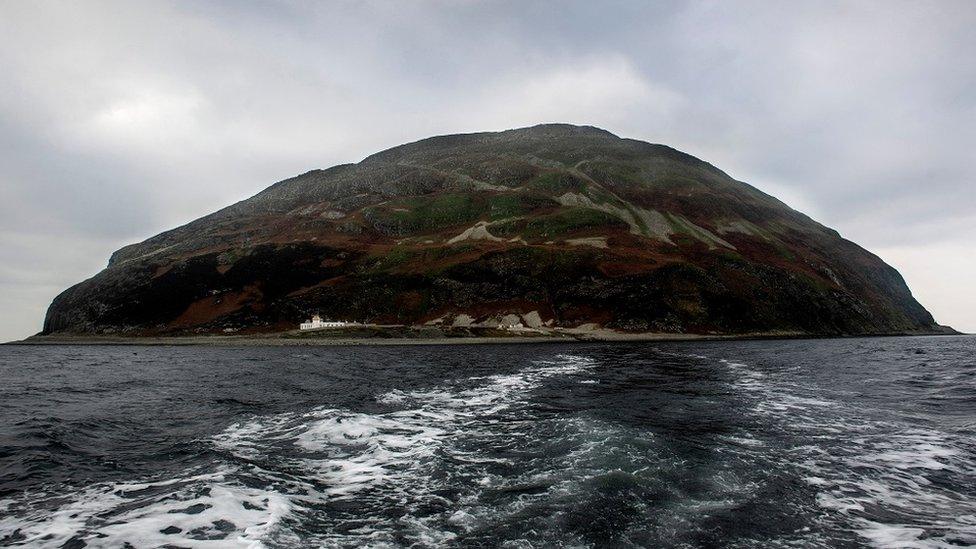
The uninhabited island of Ailsa Craig is situated in the Firth of Clyde, about 10 miles from the Scottish mainland
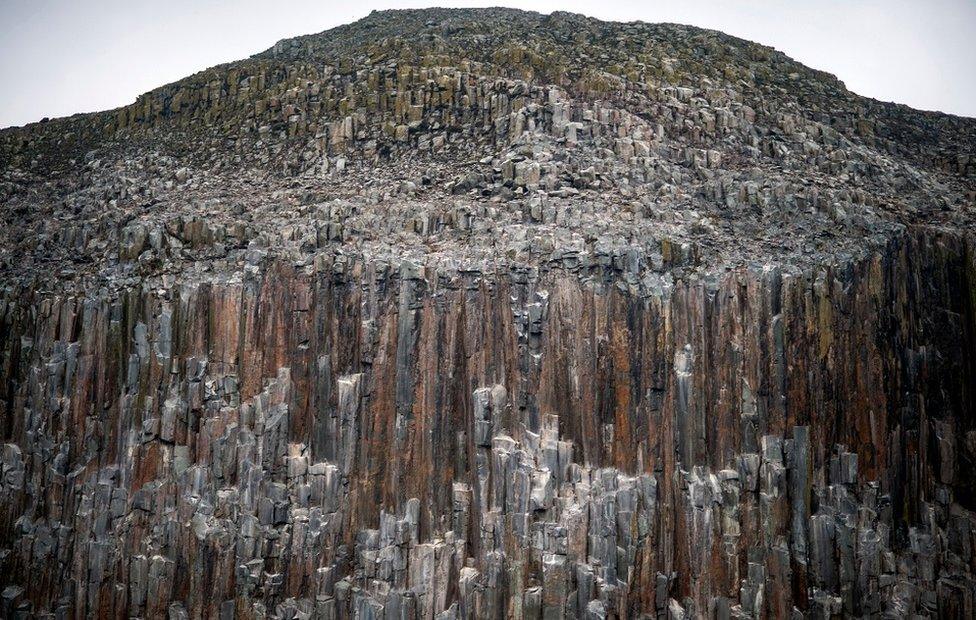
The island has a unique granite which is only found on Ailsa Craig
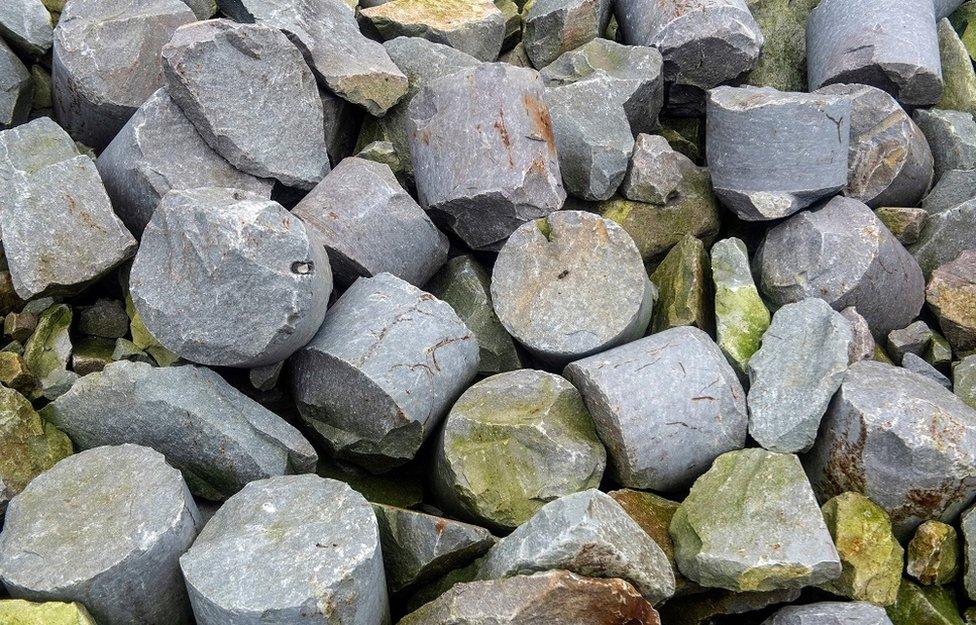
The hard properties of the granite makes it an ideal material for curling stones
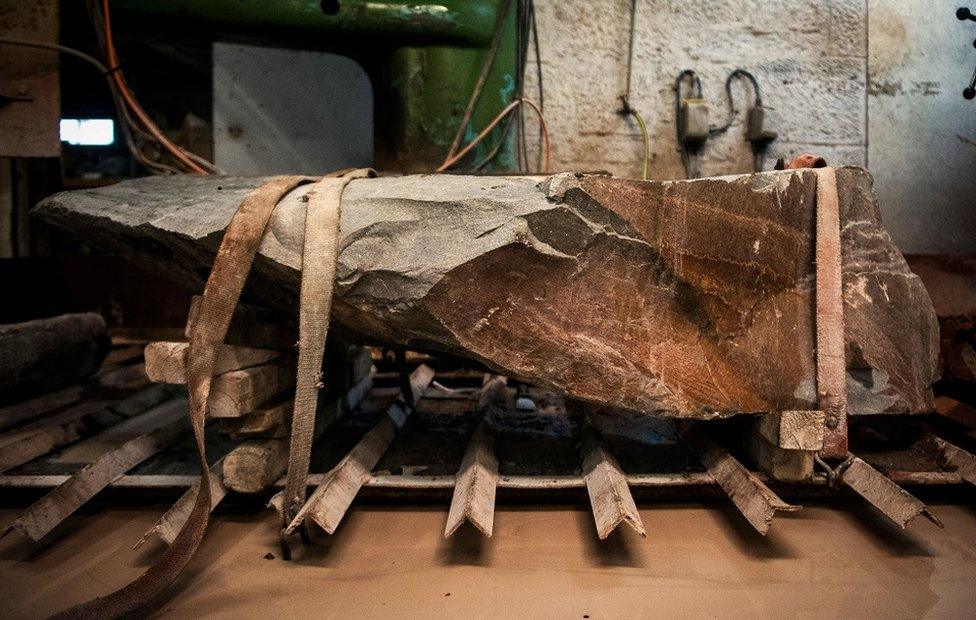
A harvested boulder of granite at the workshop in Mauchline, Ayrshire
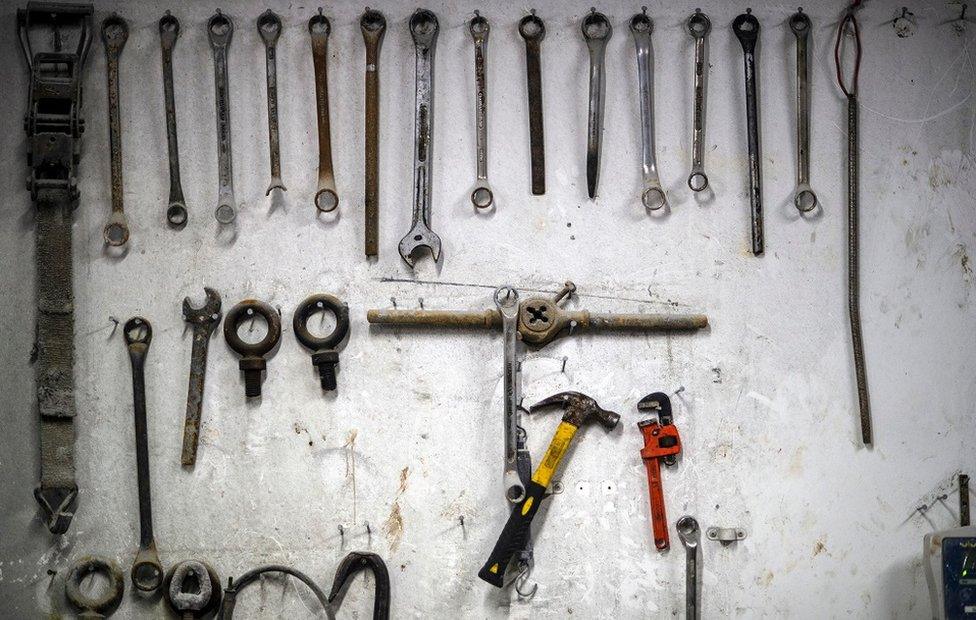
Tools hang on the wall in the Kays Curling workshop
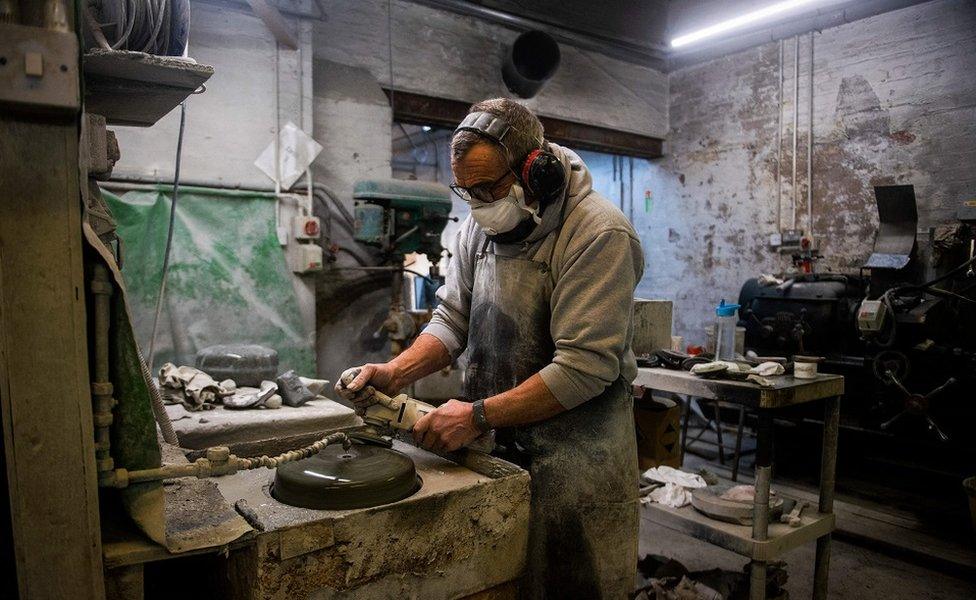
Workers take an hour to hand craft each individual stone
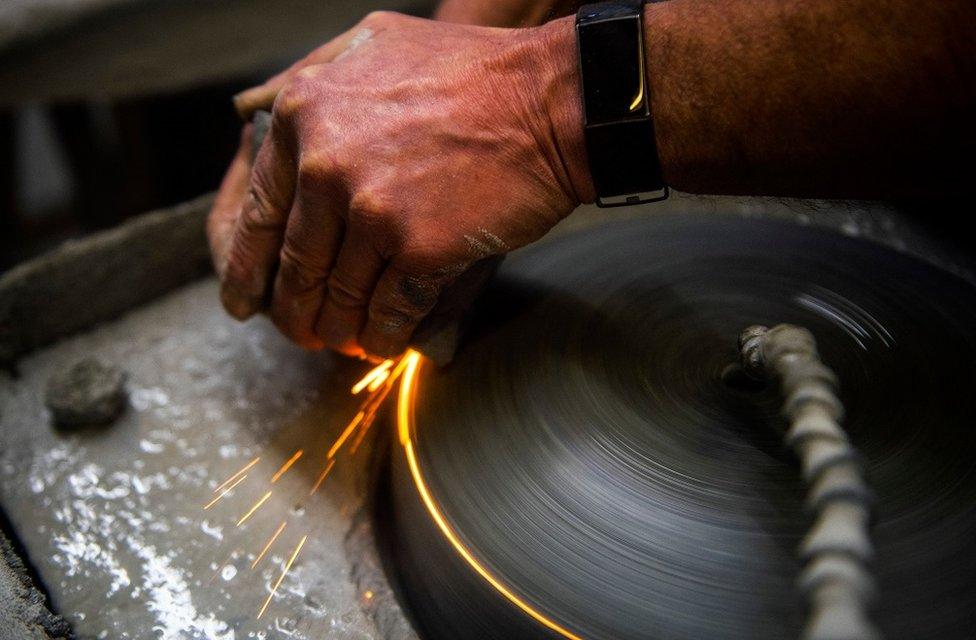
A curling stone being moulded into shape
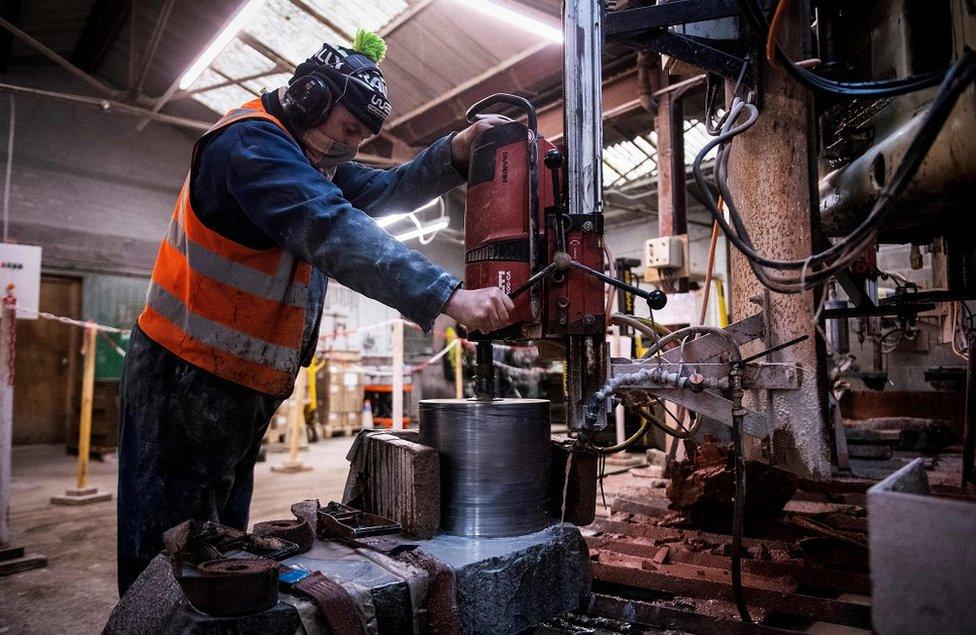
The company has been making stones since the mid-19th Century
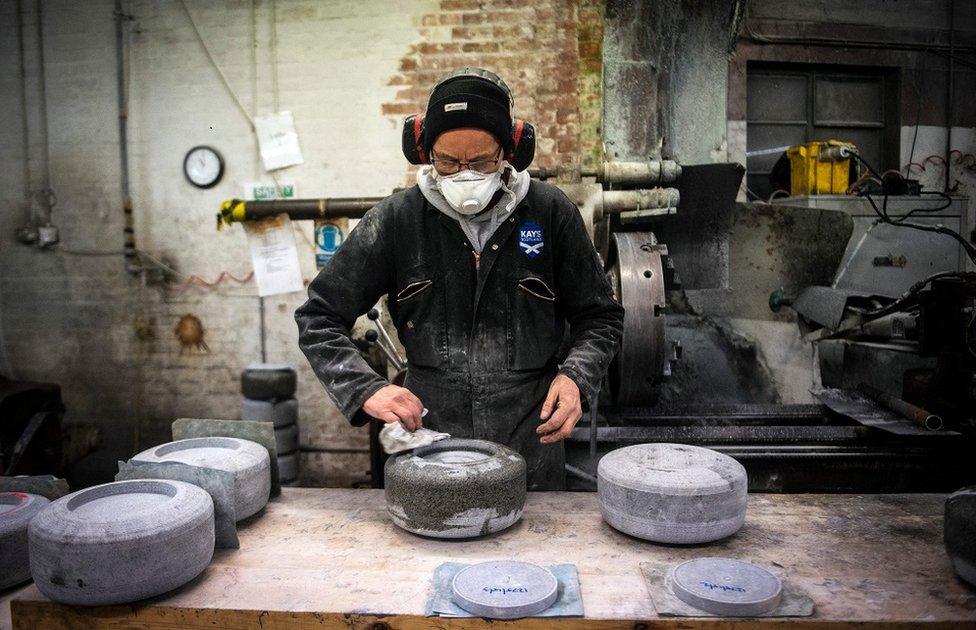
Kays Curling manufactures the stones being used in the 2022 Winter Olympics
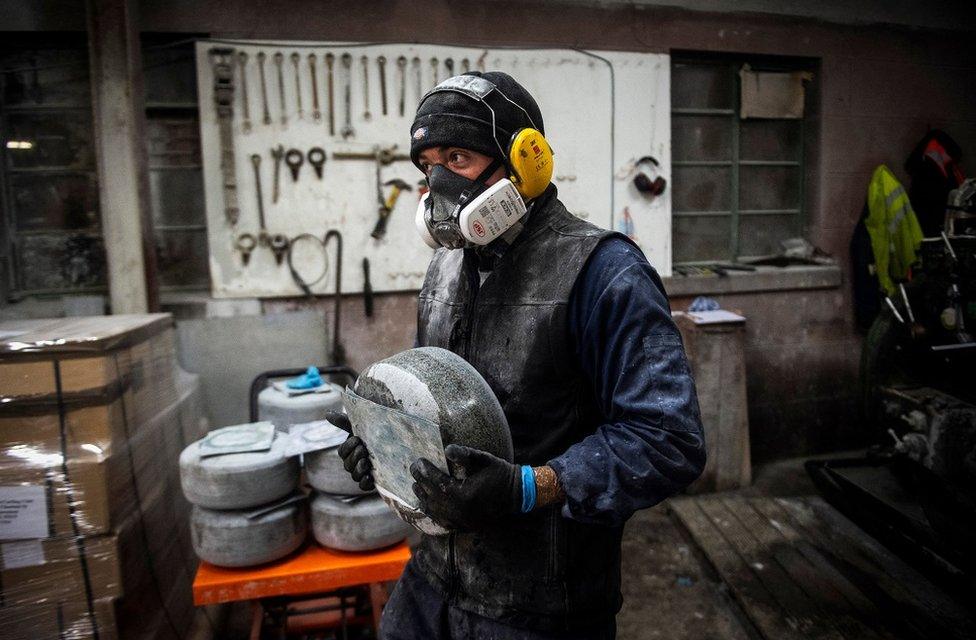
A worker protected against the dust and noise of the workshop
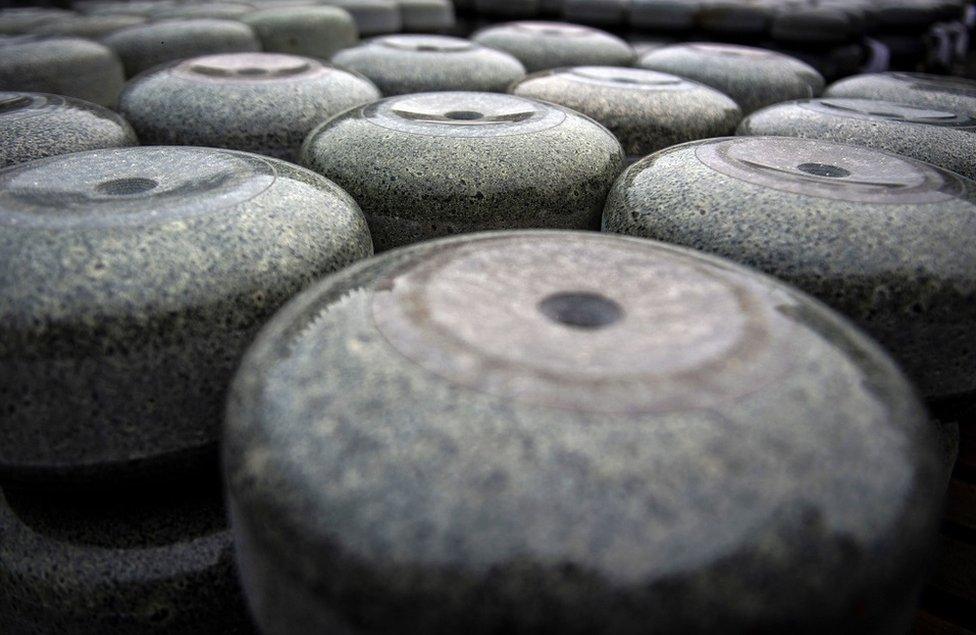
Partly-finished stones at the Kays Curling workshop
All images by Andrew Buchanan.